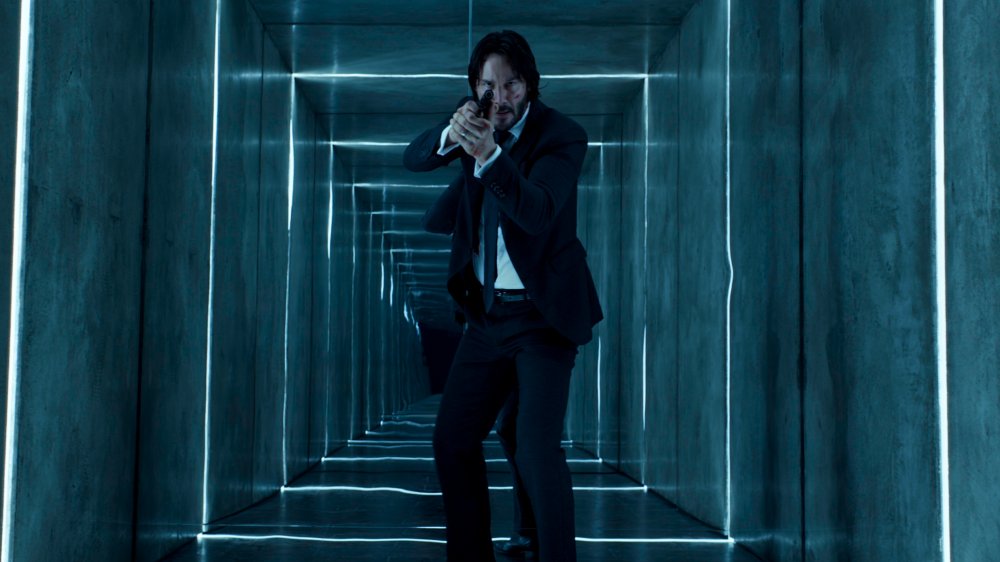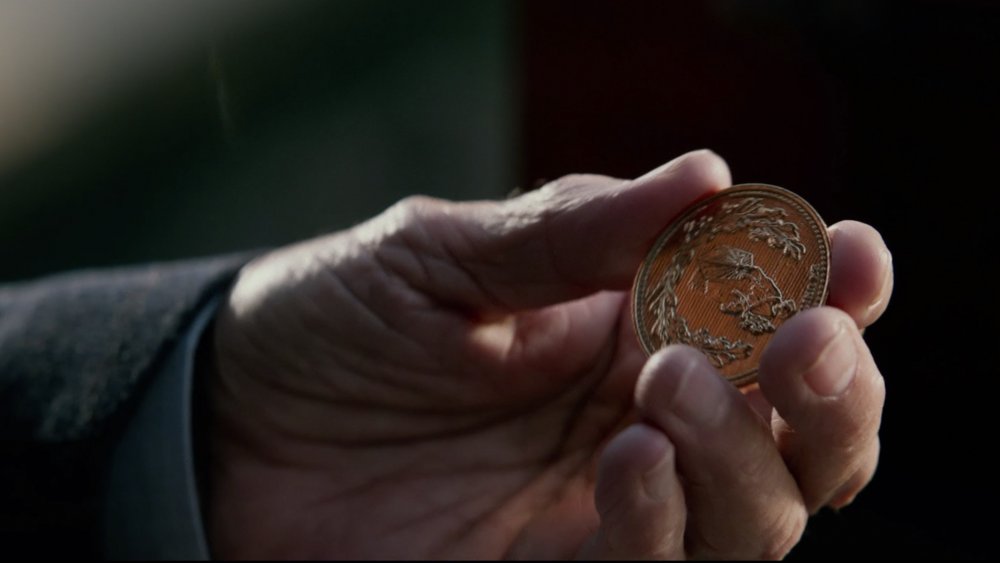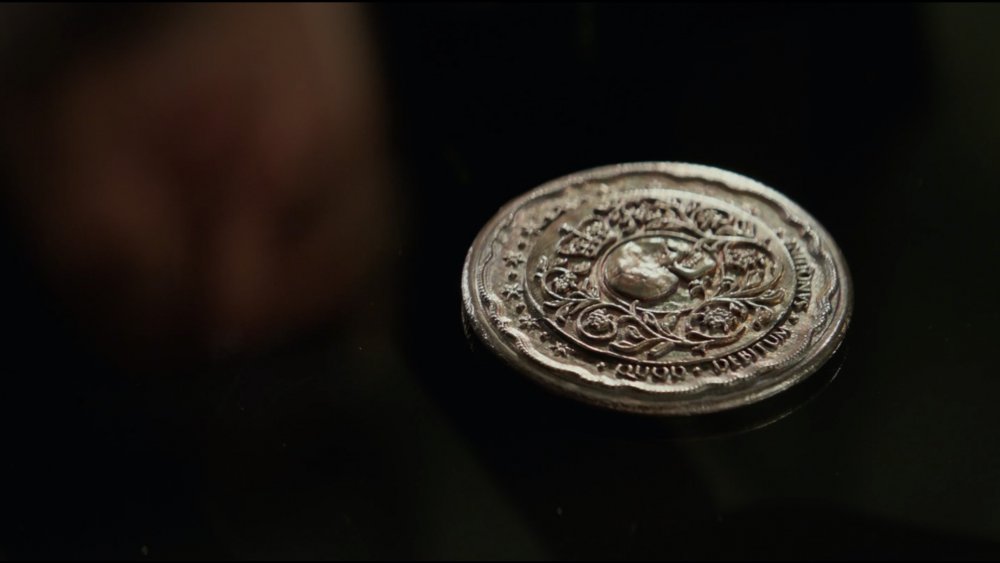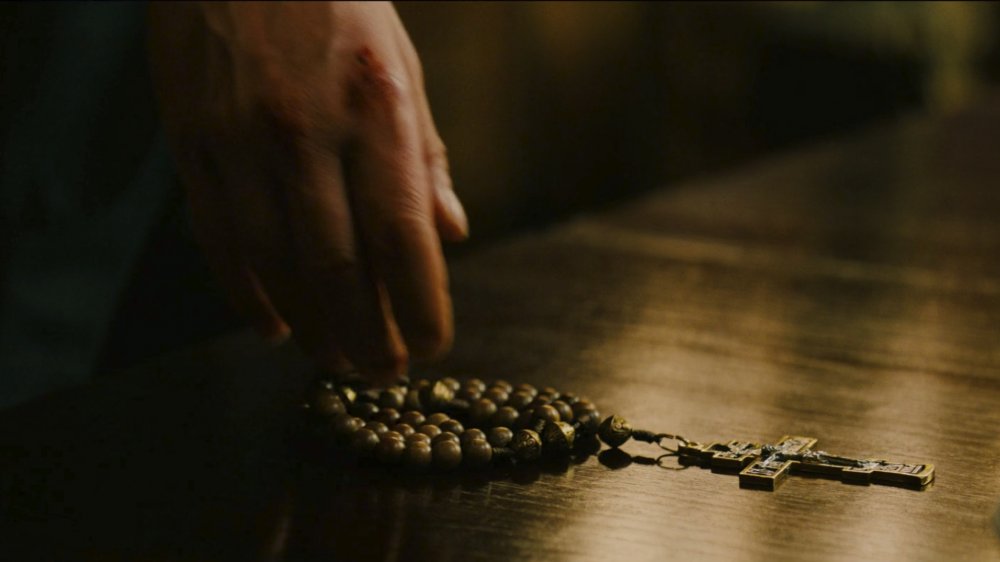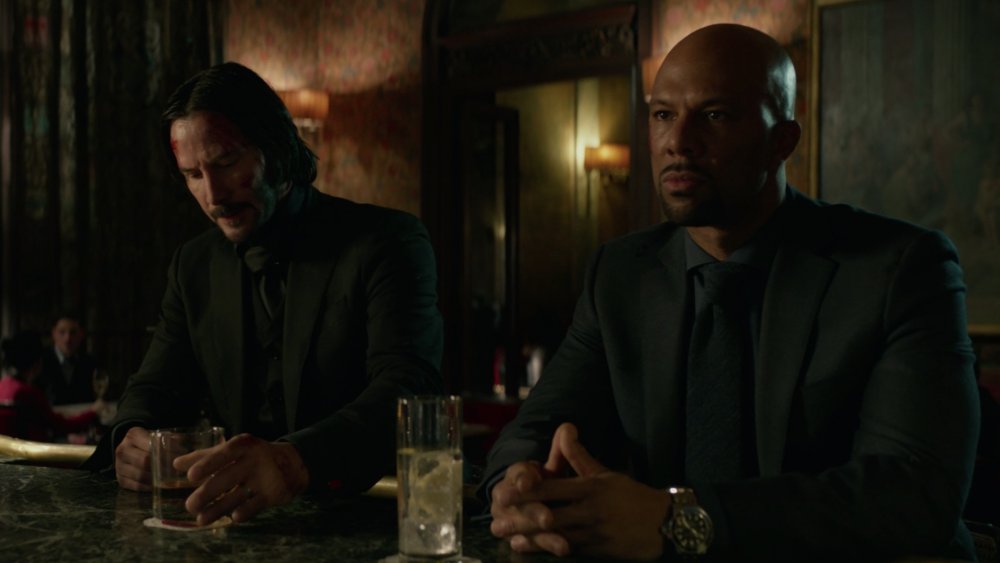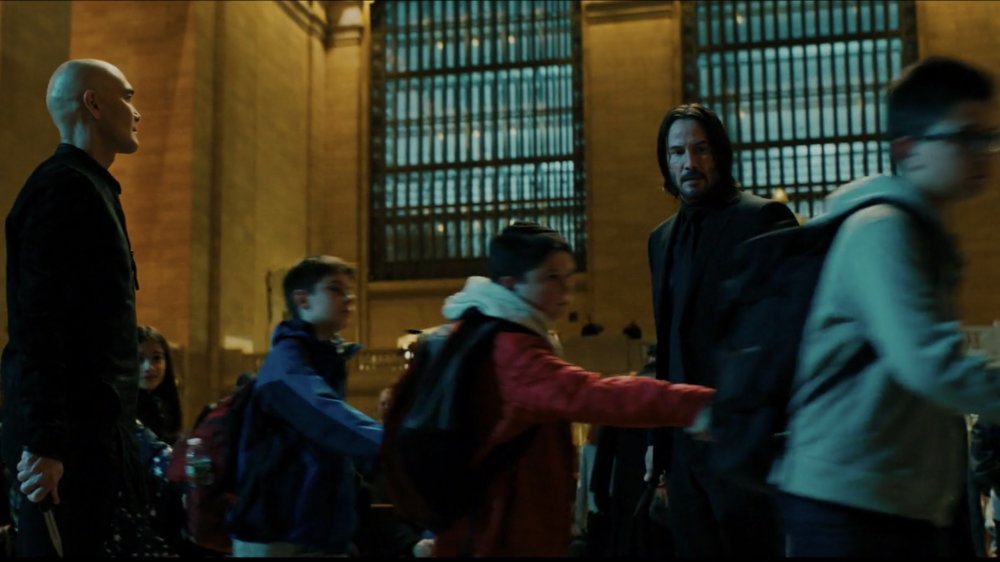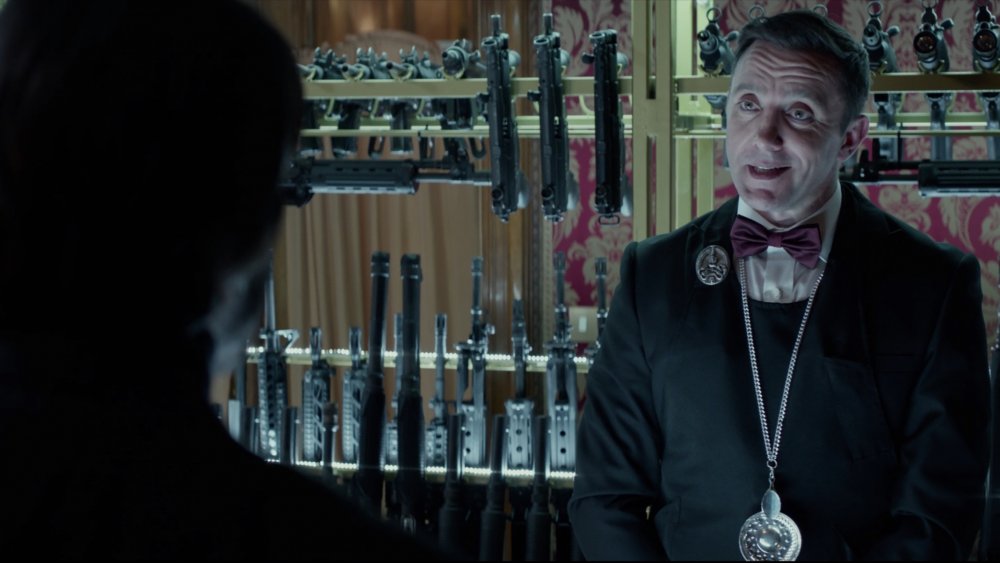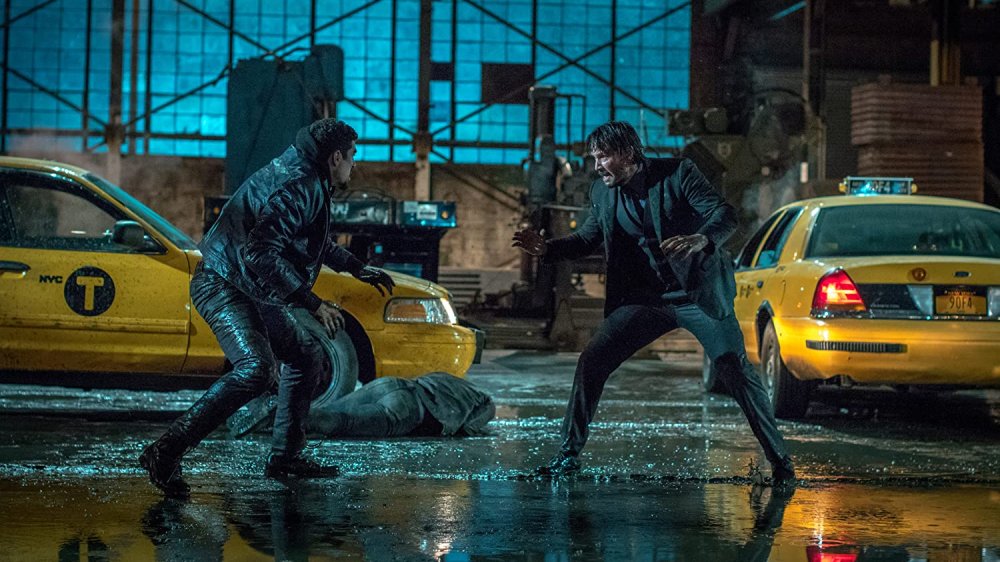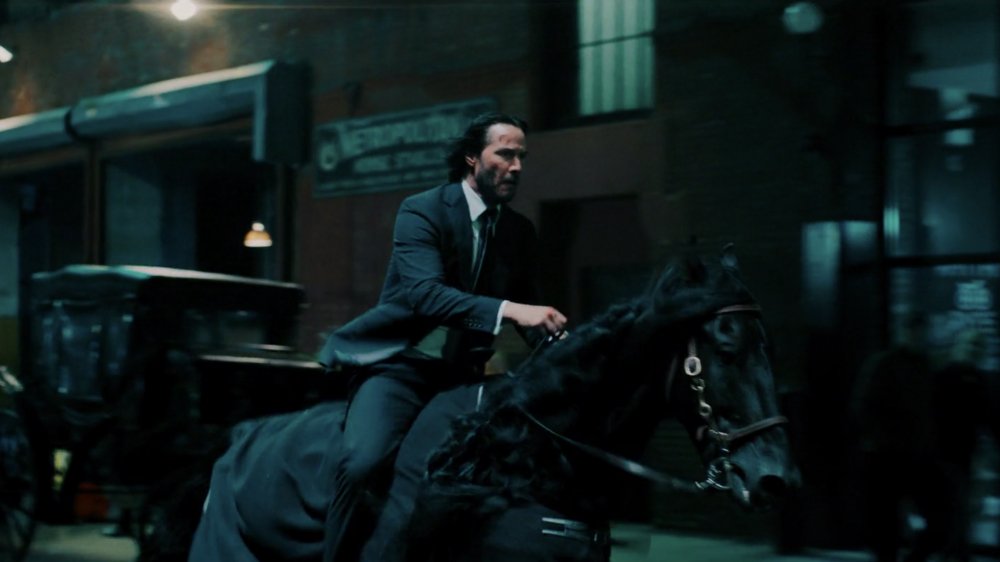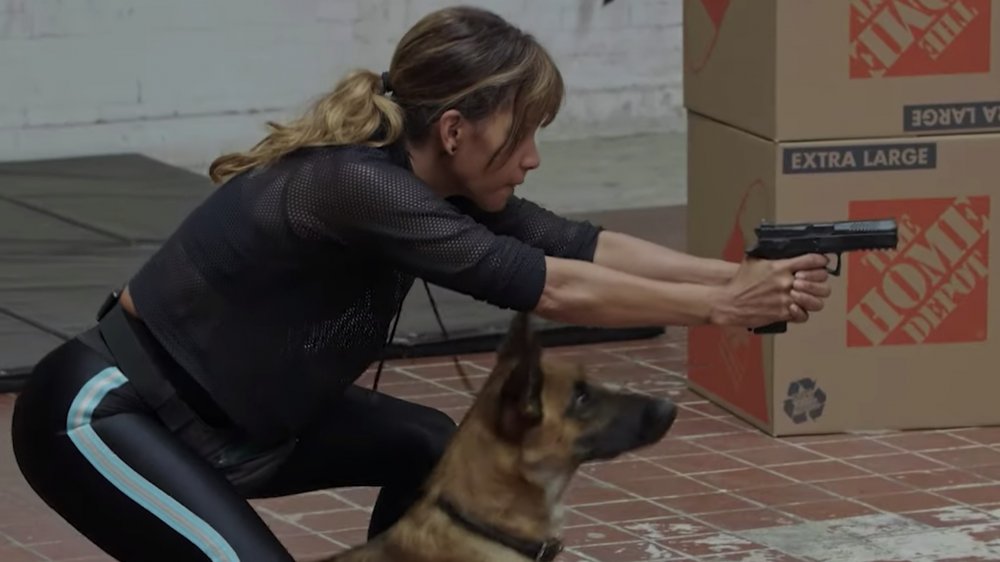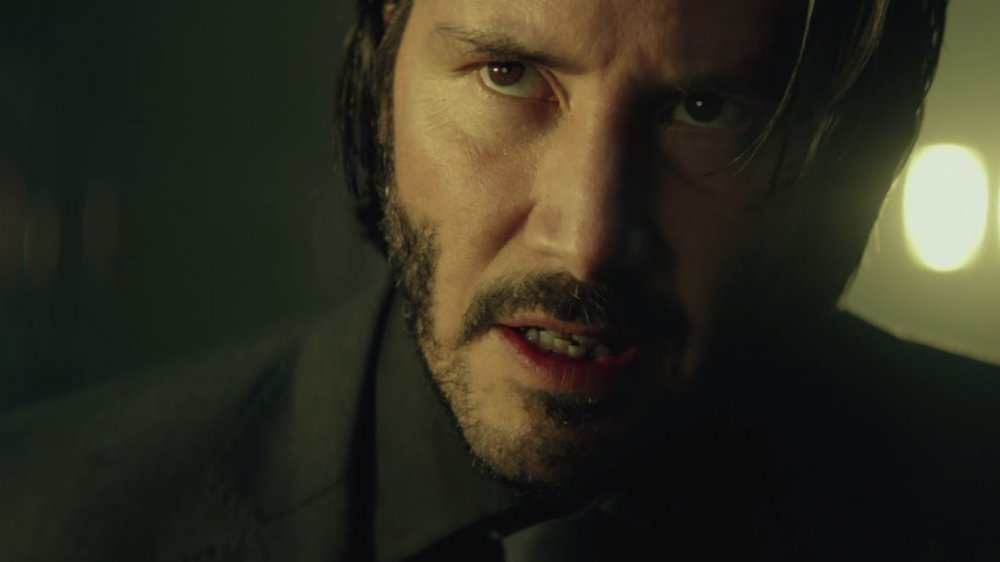The Rules Of John Wick's World Explained
"Rules. Without them, we live with the animals."
So says Winston, the cordial yet mysterious manager of the New York Continental Hotel, central landmark of the John Wick film series. Each film in the John Wick franchise brings us deeper into the underground society of assassins from which the titular character seeks to escape by any bloody means necessary. This society is governed by rules, set and enforced by the enigmatic High Table, which has kept the competing forces of their violent world in check for untold generations.
The text of John Wick is obsessed with rules and consequences, but there are also a set of creative guidelines and standards behind the scenes that have helped set the series apart from other action films and help explain why audiences are so captivated by what is essentially a very simple urban fairy tale.
Follow us as we explore the world Under the Table and behind the camera.
The gold standard
In the world of John Wick, those who serve under the High Table — from assassins to arms dealers to bartenders — provide goods and services in exchange for specially minted gold coins. On one side of the coin is a cloaked figure standing behind a shield, and the words "Ex Unite Vires" ("From Unity, Strength"); on the other is a lion standing in front of a shield, and the words "Ens Causa Sui," ("Being One's Own Cause" or "Something Generated by Itself").
Over the course of the series, John Wick trades coins for weapons, medical care, lodging, drinks, and favors. But trying to determine the monetary value of a High Table coin is futile — coins are not about wealth, they're about respect. In the words of Barrada, who oversees minting the coins, in Chapter 3, a coin "does not represent monetary value. It represents the commerce of relationships, a social contract in which you agree to partake." Astute viewers will note that, when offered, no one in the series has yet turned down a coin, or refused to perform a favor for another member of their society in exchange for one.
In a behind-the-scenes featurette, John Wick producer and co-director David Leitch refers to coins as tokens of membership. Each of the first three films introduces a talisman of sorts that defines how that film approaches the world Under the Table. In the first film, the gold coins represent access, the audience's invitation to the secret underworld.
Every marker must be honored
In John Wick: Chapter 2, a second talisman is introduced — the marker. Markers are gold tokens which flip open like a pocket watch to reveal a bisected silver plate inside, which serve as a record of debt. When one person Under the Table asks a significant favor of another, the one granting the favor has the right to demand anything in return, at any time. The obliged party leaves a bloody thumbprint on one side of the silver plate, while the one granting the favor keeps the marker, and presents it to the other party when the time has come to call in the debt. Only once the favor is complete does the marker holder leave their own bloody thumbprint inside the marker. The High Table also keeps a record of all markers to ensure the legitimacy of all debts.
Someone holding your marker is a serious, unbreakable commitment. Even among a society of assassins, you are not permitted to kill someone who holds your marker, nor may you refuse to honor it. In Chapter Two, John initially refuses Santino D'Antonio's marker, and Santino burns down John's house in response, an action that holds up as entirely justified Under the Table. In Chapter 3, Sofia Al-Azwar honors John's marker even after John is declared excommunicado by the High Table.
Markers are the talisman of obligation, that which tethers John to the world of blood and guns whether he likes it or not.
There is no getting out
When the first John Wick begins, John is five years retired from his life as the Baba Yaga, an assassin so legendary that he is feared even by those he serves. But he's only days separated from the death of his wife, Helen, the person for whom he left the business. His leave from the service of Russian mob boss Viggo Tarasof was not easily won — John was granted his retirement after the completion of an "impossible" task. It is implied throughout the series that escaping the assassin's life alive is essentially unheard of.
Fate steps in to draw John back into the underworld after Helen dies an untimely but natural death. Viggo Tarasof credits Helen's death to divine retribution for John's life as an assassin. John, who fears damnation himself, may also believe that God is denying him rest, though he pursues it nevertheless.
Appropriately, our third and final talisman, introduced in Chapter 3, is John's "ticket," a Russian Orthodox cross and rosary that he returns to the Director, the woman who presumably raised him, after his excommunication. The ticket grants him a swift and secret exit out of New York, where he's beset on all sides by assassins looking to turn in his head for $15 million. Chapter 3's talisman represents escape, and it's no coincidence that this totem is the only one of the three that's broken upon use — there is no escape.
No Doing Business on Continental Grounds
It's the first rule the audience learns in John Wick, and it's the one that gets John in the most trouble. The Continental is a chain of hotels operated by the High Table, with locations around the world, that caters to globetrotting assassins. The Continental offers a variety of specialized services for their clientele, such as doctors, arms dealers, and tailors who will make you the perfect kevlar-lined suit, but the most important thing it provides is peace of mind. Anyone who "conducts business" on Continental grounds — and by "business" they mean "murder" — will be summarily excommunicated by the High Table, cut off from the society's resources and becoming easy prey for anyone who wants them dead. Guests are required to leave all grudges and contracts at the door so they can enjoy a drink and a good night's sleep without worrying about whether or not they'll wake up.
John breaks this cardinal rule when he murders Santino D'Antonio in the New York Continental bar at the end of Chapter 2, which leads to not only his own excommunication, but consequences for anyone who aided the assassination or his escape from the High Table's judgement. Winston nearly loses his position and his life for offering John a one-hour head start from pursuit. The Continental is sacred, not just as a base but as a symbol that allows these cold-blooded killers to see themselves as civilized.
No collateral damage
When one considers the violence and cruelty of the real world, action movies can become a very guilty pleasure. Gun violence kills about 100 people in the United States each day, and it's impossible to ignore how our popular culture normalizes or even romanticizes killing people with guns. The John Wick series in particular depicts gun violence as, if we're being honest, extremely rad. Throughout the films' nearly non-stop action sequences, it's next to impossible not to delight in the choreography, cinematography, and the creativity with which John Wick dispatches his foes. (For the record, Rotten Tomatoes puts John's personal kill total over the first three films at 299, though not all of these are with guns.)
But there's a particular, subtle creative choice that helps to keep the John Wick audience from stopping to consider the carnage for even a moment, and that's the fact that, despite the outrageous death toll, the series so far features absolutely zero collateral damage. Apart from some mobsters in over their heads in the first film (who presumably still serve Under the Table), everyone John kills is also a killer operating under the same set of agreed-upon rules. This effectively makes murder as in bounds for John as punching is for a boxer between bells.
When one considers the psychic damage of decades of films in which death is dealt to random thousands in crumbling skyscrapers, John Wick's polite isolation of violence is almost refreshing by comparison.
No world but his world
Part of the reason why the John Wick franchise can isolate the scope of its violence specifically to the world of assassins is that, as far as the films are concerned, there is nothing but the world of assassins. In behind the scenes featurettes, producer/directors Chad Stahleski and David Leicht speak of the world of the first film as being "heightened like a graphic novel," but as the series has evolved, it's much more apt to say that the world of John Wick is like a video game, where a world may appear to be open and fleshed out, but in fact centers around only one idea or objective.
In the John Wick films, everything the audience encounters revolves around professional murder. John Wick is just as likely to run into another assassin on the street as one is to run into another trainer in a Pokémon game. The Continental is like a home base where assassins can return, recover, and upgrade themselves (with available weapons, health, armor) between stages. The society has its own economy and its own rules that "players" honor even when no authority figure is watching, and since the High Table seems to freely operate with no threat of police or government interference, there is no outside authority to enforce the kind of consequences one might face for their actions in the real world. Only the rules of the game matter.
Practical is better
The John Wick series adopts the trappings of a virtual world, but when it comes to the actual filmmaking, there's very little virtual about them. One of the traits that separates the John Wick films from other hit action franchises of its time is its relatively spare use of visual effects in favor of practical stunts. Chad Stahleski and David Leicht, who co-directed the first chapter, are the co-founders of 87eleven Action Design, a collective of stunt performers and coordinators who have been working on Hollywood productions for decades but whose influence has recently exploded, thanks in large part to the success of John Wick. 87Eleven employs a wealth of stunt and martial arts expertise and an intricate pre-visualization process to experiment, design, and rehearse long, complicated fight scenes, holding to an obsessive standard of quality while also keeping the on-set production times — and therefore the expense of shooting — under control.
While blockbuster action franchises boast computer-driven effects shots numbering in the thousands, the John Wick series is about showing off the elegance of practical stuntwork, with CGI only taking prominence under specific circumstances, such as the motorcycle chase in Chapter 3. That's not to say that there isn't a great deal of CGI at play in John Wick — gun flares, blood splatters, hidden cuts and erased wires — but it's a supporting player, not the star. It's a different variety of spectacle more akin to martial arts films than other modern American action flicks.
Make Keanu do it
The John Wick series' signature of long, close-up action takes is only possible because Keanu Reeves is a performer who is willing to dedicate countless hours to mastering any skill that the script demands. In preparation for each John Wick film, Reeves has put in months of full-time training in martial arts, tactical shooting, and precision driving, so the filmmakers have rarely had to stage scenes around hiding a stunt actor, and so he could maintain an actor's connection with the audience throughout. Director Chad Stahleski was Reeves' stunt double for the Matrix films, and the two have a very close relationship, which also means Stahleski is intimately familiar with Reeves' potential and limitations, and playfully exploits Reeves' habit of gleefully throwing himself into training for a film.
For Chapter 2, Stahleski brought in Brazilian masters the Machado brothers to help Keanu perfect his jiu-jitsu, and sent him to firearms training with world champion sport shooter Taran Butler. The results are dazzling and a little terrifying — it would be a bad idea to pick a fight with Keanu Reeves. When Reeves suggested that John Wick ride a horse in Chapter 3, Stahleski assigned him to learn trick riding because just learning to ride a horse would be "too easy." Reeves also plays creative roles behind the camera, pitching story and stunt ideas.
Still, let's remember to give some love to Reeves' stunt double Jackson Spidell, who gets tagged in to take John Wick's nastiest falls.
Everyone is a stunt performer
Keanu Reeves isn't the only John Wick star who undergoes intensive stunt training, in fact, it's expected of just about everyone. Any actor portraying a character who gets actively involved in action sequences is expected to meet the rigorous standards of the full-time stunt performers who make up the armies of nondescript goons dispatched by John Wick and company. The goal is to utilize doubles as rarely as possible, allowing the camera to move freely and maintain a connection to the characters throughout fight sequences. The cast and crew refers to this practice as "The John Wick Program."
Each actor gets trained in a fighting style specific to their character, often built off of the performer's preexisting skills. Adrianne Palicki (Ms. Perkins) paired with stunt performer Heidi Moneymaker (Scarlet Johannsen's Black Widow double) to develop a judo-based style that would allow her to convincingly take down the larger Reeves, while Michael Nyqvist (Viggo Tarasov) was assigned a "drunken master" style, indicating a tough brawler past his prime who would now have to cheat to win. Common (Cassian) threw himself into gun-fu and knife training, while Ruby Rose (Ares) perfected a style based on her existing boxing skills. The grand champion of the John Wick Program (apart from Reeves himself) is undoubtedly Halle Berry (Sofia), who aggressively pursued a role in Chapter 3 and then committed to seven months of not just fighting and shooting lessons, but also to training with her character's stunt dogs.
Don't mess with John Wick
We saved the most obvious for last — in the world of John Wick, the last thing you ever want to do is piss off the Baba Yaga. Not since Kill Bill's Beatrix Kiddo has American cinema seen such an unstoppable force of vengeance to roar, rampage, and get bloody satisfaction. John Wick is a killing machine of unprecedented versatility, a walking Final Destination film in whose hands anything from a car to a pencil to a library book is a deadly weapon. John Wick can construct a functioning pistol out of antique gun parts in the time it takes you to break down a door. He is cartoonishly good at violence.
It's difficult to imagine how much further the John Wick series can take the story and the character in the promised Chapters Four and Five, which are expected to complete the series. The creators have established a set of rules that have contributed greatly to the films' success, but as the series draws toward its climax and audience expectations continue to rise, Chad Stahleski and company may find adhering to those rules to be a difficult challenge. How strict should a film series' style guide be? Can John Wick expand its scale while holding its shape across two more chapters? In order to keep the premise from going stale, will the creators themselves have to do the unthinkable and... mess with John Wick?
